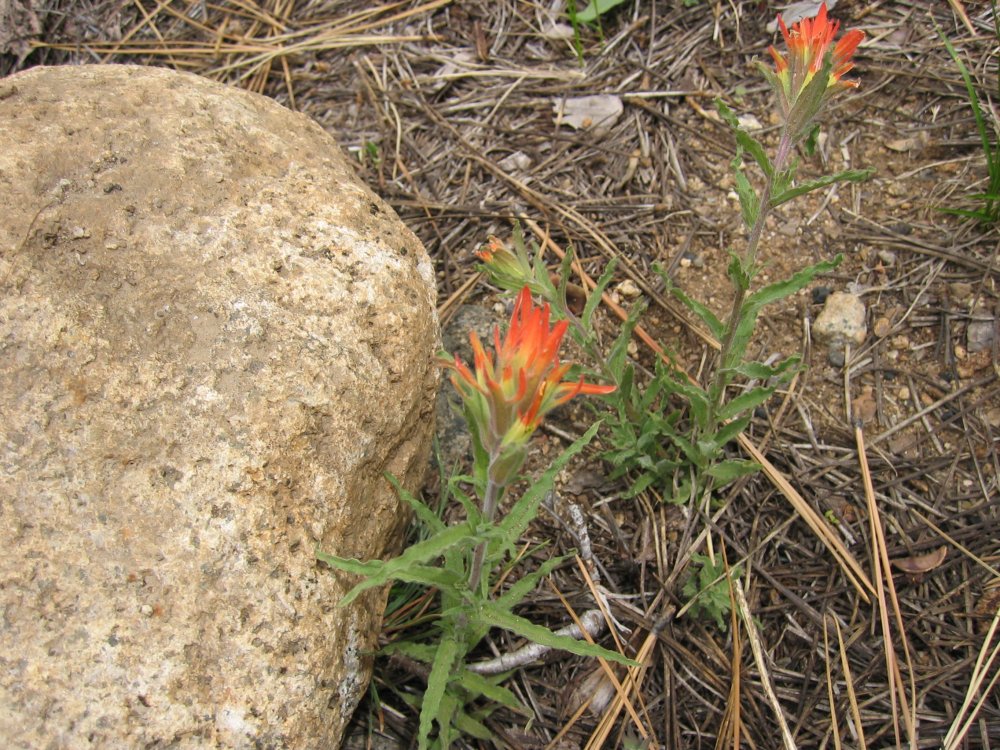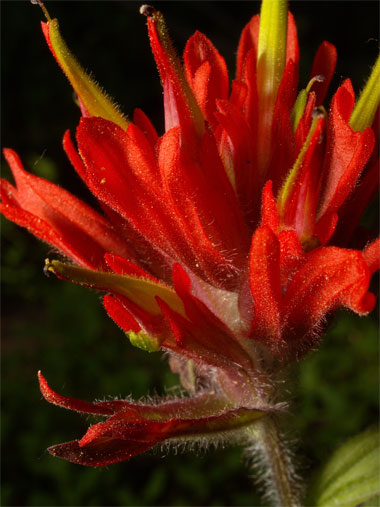

Adding compost in the spring can help encourage growth, but don’t add any traditional fertilizers to the surrounding soil. Indian Paintbrush thrives in rough conditions and won’t do well with fertilizer.

Indian Paintbrush also prefers acidic soil, between 5.1-5.5 pH, but can handle more neutral soils if needed. If the soil becomes soggy, the Indian Paintbrush will have a hard time. Sandy soil that stays moist but provides excellent drainage is ideal for Indian Paintbrush. In desert regions, this plant will suffer greatly. Indian Paintbrush can easily survive cold winters, but it doesn’t like intense heat. These areas tend to have moderate humidity and temperatures. Indian Paintbrush thrives in mid-western prairies, meadows, grasslands, and even some mountainous regions. They still prefer moist soil but will continue to grow even if conditions become dry. In its second year, however, Indian Paintbrushes become hardy and drought-tolerant. During the first year of life, Indian Paintbrushes need regular watering. The water needs for Indian Paintbrush vary based on where the plant is in its lifecycle. So, it’s best to plant Indian Paintbrush amongst lower laying plants, such as grasses, which won’t block the sunlight. Shade of any type will inhibit its bright blooms. Indian Paintbrush thrives in sunny spaces. It’s a true wildflower that cannot be controlled. However, its unpredictable nature is part of this plant’s charm. It’s unclear why Indian Paintbrush thrives some years and seems to fail in others, even in the exact location. Though we know a lot about the Indian Paintbrush, we don’t know everything. Grasses that Indian Paintbrush will do well with include blue-eyed grass, bluebonnet, and beardtongue. Its hemiparasitic nature does mean that it’s best to plant Indian Paintbrush near other grasses native to its natural habitat. Usually, though, this parasitic activity does not harm the host plant. In other words, this plant burrows its roots into the roots of nearby plant systems to get the nutrients it needs. Typically, gardeners and landscape designers grow this plant from seed by sowing in early spring.įrom there, the Indian Paintbrush will grow quickly and is technically a hemiparasite. But for a natural, meadow-like aesthetic, it’s a trendy plant. Indian Paintbrush doesn’t do well in trimmed, manicured gardens.
INDIAN PAINTBRUSH SEEDLING FULL
Botanical Name: Castilleja Coccinea Common Name(s): Indian Paintbrush, Scarlett Painted Cup, Painted Cup, Prairie Fire Plant Type: Biennial Mature Size: 1-2 feet tall Sun Exposure: Full sun Water Needs: Average Soil Type: Well-draining, moist Soil pH: 5.1-5.5 Bloom Time: Spring – early summer Maintenance: low Flower Color: red, orange, or yellow Hardiness Zones: 4-8 USDA Toxicity: Roots and stems are toxic to humans and pets, flowers are edible Indian Paintbrush Care Indian Paintbrush is a favorite for bees, butterflies, and hummingbirds, making them a favorite in gardens that hope to attract friendly pollinators. Indian Paintbrush also features seasonal blooms that tend to be red or yellow-tipped, but they’re less showy than the bracts and easily missed. We say bracts instead of blooms because technically, the bright-colored ends to the plants are a type of modified leaves rather than petals. That means that it takes two years to complete a growing cycle, after which the plant will die. This plant is also known as Scarlett Painted Cup or Prairie Fire, thanks to its red, orange, and yellow bracts. Common name of paintbrush refers to the supposed resemblance of the flowering plant to a brush dipped in paint.Indian Paintbrush ( Castilleja Coccinea) creates colorful wildflowers native to prairies and grasslands throughout North and South America. Genus name comes from an 18th century botanist, Domingo Castillejo, of Cadiz, Spain. Two types of medium green leaves: entire, lance-shaped leaves in a basal rosette and stem leaves divided into 3-5 deep, narrow lobes. The large, fan-shaped, orange-red "flowers" are actually brightly-colored, three-lobed, leafy bracts which appear at the stem tops in dense spikes and which surround and hide the tiny greenish-yellow true flowers. It is a Missouri native which occurs in prairies, rocky glades, moist and open woodlands, thickets and streambanks in the eastern, central and southern parts of the State (Steyermark). Castilleja coccinea, commonly called Indian paintbrush or painted cup, is a biennial member of the broomrape family (Orobanchaceae) that typically grows on unbranched stems to 1-1.5' tall (less frequently to 2').


 0 kommentar(er)
0 kommentar(er)
